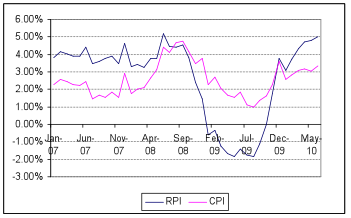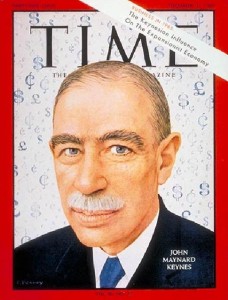Few US monetary economists have as solid a reputation as Professor John Taylor of Stanford University and the Hoover Institution. In a recent op-ed in the Wall Street Journal, “The Dangers of an Interventionist Fed,” he succinctly and persuasively argues that the Fed is damaging both the economy and its own credibility with serial, extraordinary market interventions. Here is a relevant excerpt:
The combination of the prolonged zero interest rate and the bloated supply of bank money is potentially lethal. The Fed has effectively replaced the entire interbank money market and large segments of other markets with itself.[1]
Arbitrary intervention in or manipulation of financial markets is anathema to Taylor and other members of the Monetarist, Chicago school of economics, associated with the late Milton Friedman. Rather, the central bank should follow strict rules instead. As long as the central bank can maintain a stable money supply, or at least a stable, low rate of growth thereof, it is assumed that economic stability will generally follow or, at a minimum, that the central bank will not be the source of instability. (Bad economic policy will always be a source of instability, regardless of the quality of monetary policy.)
Taylor goes on to write that consequences of recent and possible future arbitrary actions are likely to be severe, as “the Fed is distorting incentives and interfering with price discovery with unintended consequences throughout the economy”. As I wrote in a similar if less diplomatic vein in last month’s Amphora Report, “Through the Broken Window”:
[I]f policymakers keep mucking around with the marketplace, the economy will not only fail to improve sustainably on its own; rather, it will descend into a vicious spiral of stagnation, capital flight and eventually an outright decline in living standards.[2]
Taylor’s proposed solution is to put the Fed back into a rules-based box. Specifically, he recommends that the Congress pass the recently introduced “Sound Dollar Act”:
The Sound Dollar Act of 2012, a subject of hearings at the Joint Economic Committee this week, has a number of useful provisions. It removes the confusing dual mandate of “maximum employment” and “stable prices,” which was put into the Federal Reserve Act during the interventionist wave of the 1970s. Instead it gives the Federal Reserve a single goal of “long-run price stability.”
Long-run price stability. Well isn’t that a nice idea? The problem here is that ever since president Nixon abruptly severed the link between the dollar and gold in August 1971, the Fed has not achieved long-run, rather, only temporary price stability. Taylor is nevertheless confident that the Sound Dollar Act could work, in part due to some additional provisions:
To further limit discretion, restraints on the composition of the Federal Reserve’s portfolio are also appropriate, as called for in the Sound Dollar Act.
And perhaps the most important provision of all:
Giving all Federal Reserve district bank presidents—not only the New York Fed president—voting rights at every Federal Open Market Committee meeting, as does the Sound Dollar Act, would ensure that the entire Federal Reserve system is involved in designing and implementing the strategy. It would offset any tendency for decisions to favor certain sectors or groups in the economy.
This last part is highly significant because it does try to fundamentally reform the distribution of power at the Fed. In a 2010 Amphora Report, “A Century of Money Mischief”, I wrote about how the Fed’s formal voting arrangements invariably favour the large, politically-connected New York banks over their generally smaller, regional counterparts:
[P]lease consider the Federal Open Market Committee (FOMC) voting structure: Whereas each member of the Board of Governors in Washington and the President of the New York Fed always has a vote, only four of the regional presidents may also vote at any one time, on a rotation basis. This implies that, even in the event that all four voting regional presidents dissent from a vote, the Board of Governors in DC and the NY Fed President will nevertheless carry a 2:1 majority! In other words, the power resides clearly at the political centre, not the periphery. And historically, dissenting votes have come overwhelmingly from the periphery.[3]
Professor Taylor and other proponents of the Sound Dollar Act are thus on the right track: They understand not only that arbitrary monetary policies can be highly damaging to an economy, but also that the Federal Reserve Act, as drawn up in 1913, invariably favours large banks over small, in other words, favours Wall Street over Main Street.
Unfortunately, you can be on the right track and still go off the rails. This is because whoever happens to be driving the train at any point in time is still going to be prone to political influence or simply to making mistakes. To understand this point better, let’s consider a brief history of Monetarist economics.
Monetarism grew out of criticisms of Keynesian policies, which in general place much importance on fiscal policy as a means of managing business cycles. As we know, Keynesian-style demand management fell out of favour in the 1970s, the decade of the dreaded stagflation, and Monetarism, along with Rational Expectations Theory (RET), inspired the explicit monetary-targeting policies of the Volcker Fed, beginning in 1979.
The battle against the 1970s stagflation had been won by the mid-1980s and Monetarists basked in empirical as well as apparent theoretical success. But by the late 1980s, the Fed was at it again, keeping rates lower for longer than implied by money supply and credit growth. A bubble formed in southwestern US real estate and blew up in the late 1980s, crippling the Savings and Loan industry (S&Ls) and resulting in the largest US financial sector bail-out to that time. A series of bubbles and bailouts have followed, under Greenspan and now Bernanke.[4]
Notwithstanding a Nobel prize and much other recognition for his Monetarist work, in later life, Milton Friedman became increasingly sceptical that the US Fed or other central banks for that matter were capable of implementing strict monetary rules over the long-term. There was just too much empirical evidence of arbitrary actions taking precedence over rules, with perhaps the Bundesbank and Swiss National Banks providing partial exceptions to the rule. But this presented Friedman with an intractable problem: For Monetarism to have any practical value depends critically on the ability and willingness of a monetary authority to implement consistent rules, rather than to subordinate such rules to arbitrary, crisis-driven action.
Friedman struggled with this problem for years. Eventually he came up with an answer that might surprise some: If the Fed can’t do it, why then the government should:
Any system which gives so much power and so much discretion to a few men, [so] that mistakes‑excusable or not‑can have such far reaching effects, is a bad system. It is a bad system to believers in freedom just because it gives a few men such power without any effective check by the body politic‑this is the key political argument against an independent central bank. To paraphrase Clemenceau: “Money is much too serious a matter to be left to the Central Bankers.”[5]
And if the government can’t be trusted, why then perhaps a foreign central bank should be: Just anchor your currency to a more stable one with a more credible central bank standing behind it:
The surest way to avoid using inflation as a deliberate method of taxation is to unify the country’s currency [via a fixed exchange rate] with the currency of some other country or countries. In this case, the country would not have any monetary policy of its own. It would, as it were, tie its monetary policy to the kite of the monetary policy of another country—preferably a more developed, larger, and relatively stable country.[6]
Indeed, the concept of a ‘currency board’, where monetary policy is ‘outsourced’ to a foreign central bank, became popular in the wake of the Latin American debt crises of the 1980s. Argentina, for example, made much economic progress under a currency board policy in the 1990s, only to be overwhelmed by large budget deficits in the early 2000s, resulting in a major devaluation of the peso.[7] (As an aside, this is yet another illustration of my view that, “consumer prices are inflation past; money and credit growth are inflation present; government budget deficits are inflation future.”)
While a currency board might appear an elegant solution, it cannot apply to the central bank of the world’s largest economy and provider of the primary reserve currency, as there is no “more developed, larger, relatively stable country,” at least not yet. No, the US must discipline itself instead.
Returning now to John Taylor’s proposed solution, he clearly has the best of intentions. He wants to put the Fed back into a box of strict policy rules and to redistribute power at the Fed away from the Board of Governors in Washington. The problem, however, is that this is not going to prevent the government running deficits, nor the ongoing political pressure to accommodate these with lax monetary policy. And even in the event that such deficits or associated pressure were not forthcoming—a rather remote possibility for the coming decade, to be sure—naturally there would still be the risk that the Fed, comprised of “a few men”, prone to “mistakes‑excusable or not,” would fail to restore a sufficient degree of trust and credibility in the dollar.
At the end of his article, Taylor concludes that the Fed’s priorities should boil down to “a more predictable policy centered on maintaining the purchasing power of the dollar.” Yet as shown above, the Sound Money Act of 2012 fails to get at the ultimate roots of the problem. It neither addresses the fiscal profligacy in Washington specifically, nor the general inability of policymakers, wherever they might be, to somehow do for free capital markets what they can and should do for themselves.
I applaud Professor Taylor for at least pointing out that the US Fed is, to put it bluntly, out of control, and that fundamental reforms are necessary if more damage is not to be done. Certainly it would be welcome were the US to take the initiative in getting its economic and monetary house in order. As it happens, however, the US may not have the luxury of time to do so.
[1] This article can be found on the Wall Street Journal’s website here.
[2] This Amphora Report can be found here.
[3] This Amphora Report can be found here.
[4]For more detail on the largely forgotten boom-to-bust cycles of recent decades, please see “Of Bubbles and Bailouts,” Chapter Three of The Golden Revolution (Hoboken, NJ: John Wiley and Sons, 2012). Find the book on Amazon here.
[5] This quote and other related quotes from Friedman can be found here.
[6] Friedman, Milton, “Monetary Policy in Developing Countries.” In
P. A. David and M. W. Reder (eds.) Nations and Households in
Economic Growth (New York: Academic Press), p. 270.
[7] As it happens, Argentina’s currency board was not 100% backed, something which contributed to the severity of their 2001-03 crisis.
This article was previously published in the April 3rd edition of The Amphora Report.


